As described in my previous post, I had an exploratory consult with an orthopedic surgeon on December 6, 2019. During this consult the surgeon told me I was ready for a hip replacement, even though my hip joint was not yet bone-on-bone, because of the severe impairment that I had already experienced to my normal activities. Once I recovered from my shock over this pronouncement, I was ready to begin to prepare myself. The earliest available surgery slots would be in March, so I knew there would be a substantial waiting period.
I should mention here that my surgeon also told me that total hip replacement surgery is now an outpatient procedure, so the expectation was that I would go home the same day as the surgery. Of course, the surgery itself would take place in one of the inpatient operating rooms, rather than an outpatient clinic. This information barely registered at the time, I was so surprised by the statement that I was ready for the surgery.
Of course, I didn’t – indeed, couldn’t – anticipate how long the waiting period would eventually become: 6 months!
I resolved to remain as active as possible, in order to be in good physical and cardiovascular condition for the surgery. That meant treating my PT and walking as training, like I had done so many times over the last dozen years. It was simultaneously familiar and a bit surreal. I also resolved to be kind to myself: find a level of activity I could maintain consistently, hopefully with minimal pain medication, since I was averse to taking pain meds, even Ibuprofen, daily for multiple months.
An immediate scheduling complication was that I had a trip planned for the first weekend in April. I would be flying to Lake Placid, NY to watch the 2020 World Synchronized Skating Championships with a friend. We were both excitedly looking forward to the trip. Here is an example of a spectacular element that we hoped to see.
I was aware that I would be strongly advised not to travel by airplane, especially cross-country, for 4 to 6 weeks after my surgery, so a March surgery date would not work for me. I told my surgeon about the trip and asked for a date as soon as possible after my planned return on April 5. I learned that the surgery schedule was set 2 months out, so the April schedule would be set (and filled) in February.
Meanwhile I continued to work with PT and had one last appointment at the end of December. After that I didn’t need any new exercises. The plan was that I would continue what I was already doing, and I had been coached on how to make the exercises more difficult, if desired. I also shared my perspective on training with my physical therapist.
I developed an exercise routine in December and January, walking about 7 miles a week. I did 2 hikes during these 2 months, one of which was 4 miles. That turned out to be the longest hike or walk I did after the orthopedics consult before my surgery – another indication of the decline in the condition of my hip, as well as how I was taking care of myself.
At the beginning of February my local county’s Parks and Recreation Department announced the 2020 edition of a program called PixInParks. The program consists of 7 hikes, each in a different county park, hiking to a particular location and taking a selfie or group photo; I took a picture of my day pack. Because of my limited range I decided to do the ADA version of each hike, and I decided to see if I could complete all seven during February. This was the view at the destination point for one of the hikes.
Just as I was finishing this series of hikes, on February 27 I received a call with a surgery date: April 21. My life was about to change, just by answering the phone! I started a countdown, with just under 8 weeks to go. In short order I had a pre-op screening phone call, a referral to a pre-op class, and some web pages to read and videos to view. Within a few days I learned that the pre-op class would be a video event, in deference to the just-emerging local cases of the novel coronavirus. (On the day I received a surgery date there were 2 cases in my county, and it was about to become an early hot spot.)
I had been hoping to be able to go on a short road trip to southern California to do some spring wildflower viewing and a few short hikes. After some thought I decided to go for it, and was able to get a container of wipes and a few other supplies to supplement the normal motel room cleaning. The panic buying of toilet paper, hand sanitizer, and other cleaning supplies was already underway. I was even able to get a digital thermometer on Amazon, after discovering that one of my local drug stores had been completely bought out by one person who had walked out with $1500 worth of them!
I drove down on March 12 and back on March 17. It was a good trip, even though it felt odd to be taking some of the precautions I did. This was in the very early stages of social distancing guidelines. On the first of two days I spent at Joshua Tree National Park I was pleasantly surprised to run into a fellow student from an intensive California Naturalist training course four years earlier. We elbow-bumped in greeting, and then I asked his friend to take a picture of us, which he obligingly did. We got this close together for the picture and then quickly separated again to the recommended 6-foot distance.
The next day, March 16, while still in the Joshua Tree NP area, I received a text message from my partner asking me to call him as soon as possible. By the time I could get through on my phone I had seen the news story on TV about a shelter-in-place order that was to go into effect the following day in seven San Francisco Bay Area counties. Yikes! I was 500 miles away and had no idea whether the main roads into the Bay Area were going to have roadblocks or anything like that. So, instead of taking two days to drive home, I went more directly, skipping most of the additional wildflower sites I had been thinking of visiting.
On my way home I stopped at a grocery store to try to stock up on essentials, but I had to go out again the next day because the store I stopped at had run out of a lot of items by the time I got there at 7pm or so. Suddenly, with an indefinite shelter-in-place order, which became state-wide a couple of days later, my life changed again, along with everyone else’s.
The European travel ban was announced on the first day of my road trip and went into effect a day later. New York Governor Cuomo had also announced that all buildings with a capacity of more than 500 people were immediately closed. With these announcements it was inevitable that my trip to Lake Placid would be cancelled, as the championships could hardly take place with only about 5 teams and no audience in a building that had been ordered closed. The official cancellation announcement was made on the day that the European travel ban took effect.
The pre-op video class took place as scheduled on March 23. Although I did not realize it at the time, the shelter-in-place order had immediately suspended all elective surgeries. On April 3 I received the call that let me know my surgery was officially cancelled. I figured that it might be 6-8 weeks after elective surgeries resumed before I would get a slot, if they went in more or less the original sequence of patients.
As the shelter-in-place progressed I focused on continuing daily PT and nearly-daily walks. Most of my walks were between 1 and 2 miles; I found that this was a distance that I could cover on a sustained daily basis without pain meds. I also found that it was gradually becoming more onerous to change from sitting to standing, or vice versa: it seemed as though I should limber up before changing position.
In late April I was called with some screening questions and, as a result, was placed in a higher-priority category for surgery once elective procedures could be resumed. Then there was more waiting. In the meantime I had decided to do some jigsaw puzzles, a pastime I had enjoyed since early elementary school age. As my waiting time continued, I completed 6 puzzles!
And I kept walking. Eventually I added up all of the mileage for my outdoor walks and hikes: about 108 miles prior to the shelter-in-place and another 108 miles after the shelter-in-place, the latter entirely in my neighborhood.
Then, suddenly, everything changed again with another phone call. On May 27 I received a call with a new surgery date: June 5, only 9 days away! This prompted a rush of preparations. A few things, like taking daily multi-vitamins, needed to stop immediately, since that was supposed to happen 10 days ahead of surgery. I needed to have an EKG and blood test, so I went to my medical facility – for the first time since the shelter-in-place had changed everything. I also picked up a surgery preparation kit, which I would need to use the evening before my surgery. I went to a medical supply store to get a so-called total joint kit, which includes several aids for simple personal tasks. I later found that the most useful were the sock aid, grabber, and shoe horn. I set up a stable chair that I could use for dressing, with a table next to it to hold the aids. I practiced using all of them, with all of the precautions that would be in place after surgery.
I also got a temporary handicapped parking placard, for which I needed to have an application form signed by my surgeon. I was glad I could get the actual placard at a local AAA office: these offices had just begun to re-open, but the DMV offices statewide were all still closed. At home I got out, from a closet, the walker and cane I had used after my hip repair surgery and cleaned them both up. I made a final trip to the grocery store to stock up on nonperishables.
And I created a punch list of items that I needed to remember to do, both before and after surgery. I have made use of such lists on other occasions, such as before big trips, and have found this to be a convenient tool.
I even managed to re-schedule a routine dental appointment that I had set up for later in June. My dentist was just re-opening her office after the shut-down, but was able to see me four days before my surgery.
Three days ahead of my surgery I had a COVID-19 nasal swab test, a requirement to make sure I was healthy and would not be a potential infection agent for any staff at the hospital. People who have had this test have said that it is uncomfortable; I would say that’s an understatement. I made a point of going for one last walk right before I had the test, because I’d been advised that, after the test, I should go directly home and self-quarantine until my surgery.
I re-viewed the videos related to the surgery. One of the videos was about what to expect in the days before, and days and weeks after, the surgery. The other was about the surgery itself. This picture from the internet shows the parts of a hip implant and how they fit and work together to replace a damaged hip.
Another thing I did was to make a list of people I wanted to receive a notification once my surgery was complete. I set this up so that my partner would only need to notify a handful of people, and they would in turn fan out to others. It was like an old-fashioned phone tree, but via e-mail and text message.
The day before my surgery I did a few loads of laundry so that I would have clean sheets, towels, nightgowns, and several outfits ready to go. I organized several pillows that I might need both for sleeping and for sitting on the couch with my leg elevated. I had already cleaned the bathroom and the kitchen, and I ran the dishwasher one last time. Finally, I gathered the minimum items I would take with me: ID, medical card, credit card, copy of my Advance Care Directive, glasses case, and a small MP3 music player cued to a long playlist of soothing music, all in a small bag I could carry over my shoulders, hands-free.
I was as ready as I could be! All that remained was the pre-surgery timeline that had been provided to me, plus doing my best to get a good night’s sleep. In the next post I will describe the final preparation, a little bit about the surgery itself, and the initial recovery.


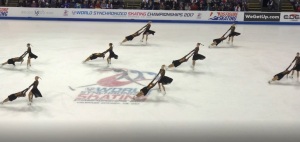
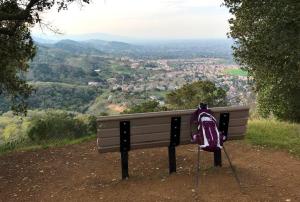
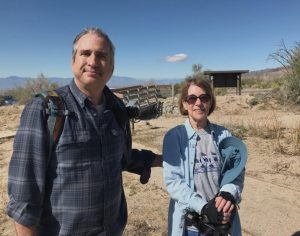
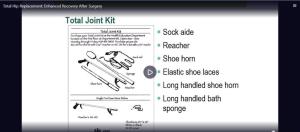
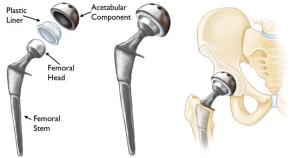
Pingback: “You’re Ready Now” | trailhiker
Pingback: Light at the End of the Pain Tunnel: Surgery and Initial Recovery | trailhiker